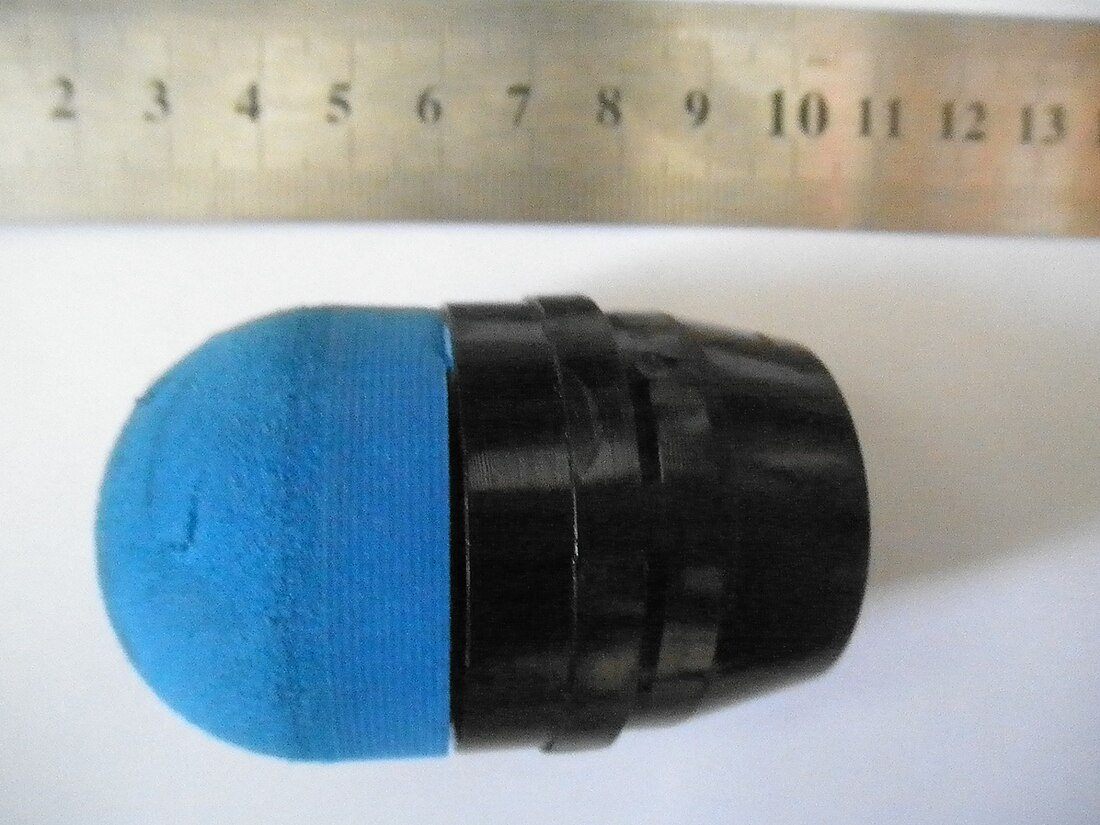Top Qs
Timeline
Chat
Perspective
Sponge grenade
Less-lethal projectile From Wikipedia, the free encyclopedia
Remove ads
A sponge grenade is a riot control weapon, intended to be non-lethal, which is fired from a 40 mm grenade launcher to cause confusion, or otherwise temporarily disable its target. As a single blunt force object, it is best used when aimed at a particular individual.

The projectile weighs about 28 grams (0.99 ounces). It is bullet-shaped, with a foam rubber nose and a high-density, plastic projectile body.

Remove ads
Potential for injury or death
Proper use of the weapons involves firing it from a medium distance, and aiming for the legs or lower torso.[1] Firing it too close, or firing it too far away which decreases the ability to accurately aim for the legs or lower torso, can cause serious injury.[1]
Improper use of sponge grenades can cause broken bones, head wounds, or permanent damage to eyes.[2] Sponge grenades impacting the upper body or head can kill.[2][3]

Remove ads
Use around the world
Summarize
Perspective
Israel
Israel has deployed sponge grenades against Palestinian protesters on several occasions,[2] and has also used the grenades against Israeli demonstrators during 2015 protests against police brutality.[4]
Hong Kong
The Hong Kong Police Force has deployed sponge grenades as a riot control tool on several occasions in July 2019 during the anti-extradition protests.[5]
New Zealand
During the fourth week of the 2022 Wellington protests against COVID-19 pandemic safety measures, the New Zealand Police deployed sponge grenades as one of the many tools used in their effort to clear the parliamentary grounds of rioters.[6]
United States
Sponge grenades were used by some police departments during the George Floyd protests in the summer of 2020 and were cited as being one of the most common types of less-lethal rounds employed.[7] In some cases, protesters were hit in the head or face with the rounds, causing serious injury.[8][9] Police shot journalist Linda Tirado in the face with a sponge grenade, permanently blinding her in one eye; [10] she entered hospice care four years later due to the traumatic brain injury.[11] During the June 2025 Los Angeles protests, CNN anchor Erin Burnett misidentified spent sponge grenades as homemade gas grenades and alleged them to be part of a protestor-led chemical attack. [12]
Remove ads
See also
References
External links
Wikiwand - on
Seamless Wikipedia browsing. On steroids.
Remove ads
